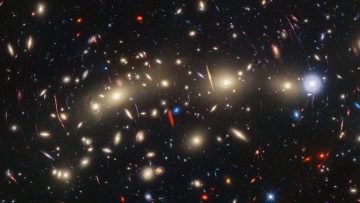In 1895, the first X-rays were taken when Wilhelm Röntgen imaged the bones in his wife’s hand. Now, we can use those same X-rays to peer deep into the universe. Using that technology, NASA has captured the ghostly bones of a cosmic ghost hand located 16,000 light years from Earth.
While eerie, the ghost hand isn’t actually a ghost. Instead, it is a nebula known as MSH 15-52, which closely resembles a human hand. The pulsar of the nebula is located in the “palm” of the ghost hand, and now images taken by NASA’s newest X-ray telescope, the Imaging X-ray Polarimetry Explorer (IXPE), have given us an even deeper view into the hand-like region.
Data from IXPE has shown researchers exactly how the magnetic field of the cosmic ghost hand moves, Roger Romani, lead author on a new study, says. “The charged particles producing the X-rays travel along the magnetic field, determining the basic shape of the nebula,” Romani says this is similar to how our bones determine the shape of the human hand.
Researchers looked at both data from IXPE and the Chandra X-ray observatory to get a closer look at MSH 15-52. They found that some regions of MSH 15-52 have extremely high polarization, reaching the maximum level expected from current theoretical work. The researchers say that the magnetic field in the nebula must be very straight for it to achieve those strengths.
That means that there is likely very little turbulence found within the regions of the nebula’s pulsar wind. Different levels of polarization are seen throughout the cosmic ghost hand, and the results overall imply that there is an energy boost given to particles in complex and turbulent regions near the pulsar of the nebula.
All in all, the image itself is very beautiful and breathtakingly eerie. Of course, the science behind it all is what really makes this discovery shine, and it’s why images from telescopes like this and the James Webb continue to garner so much public attention.








